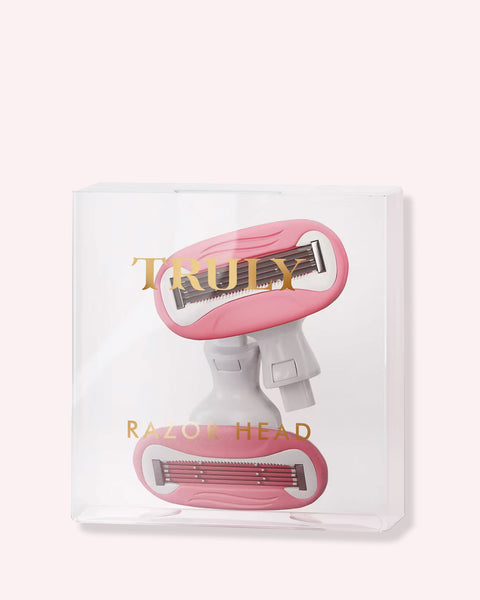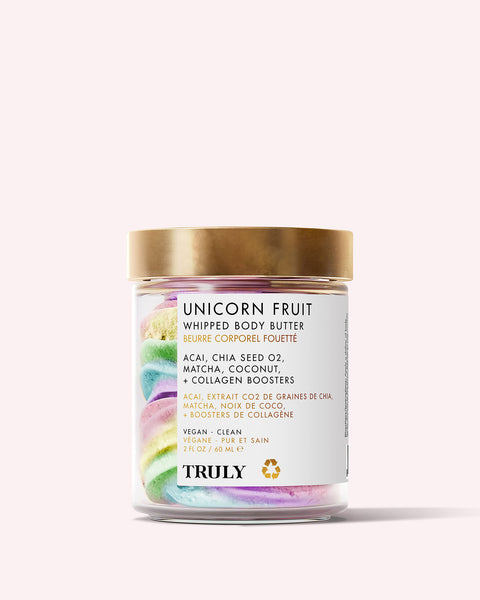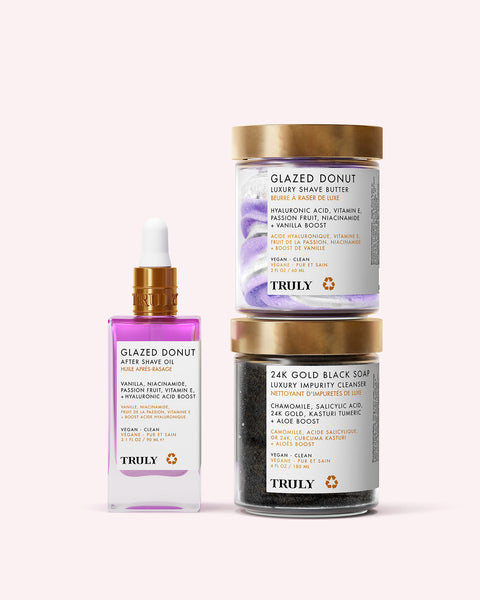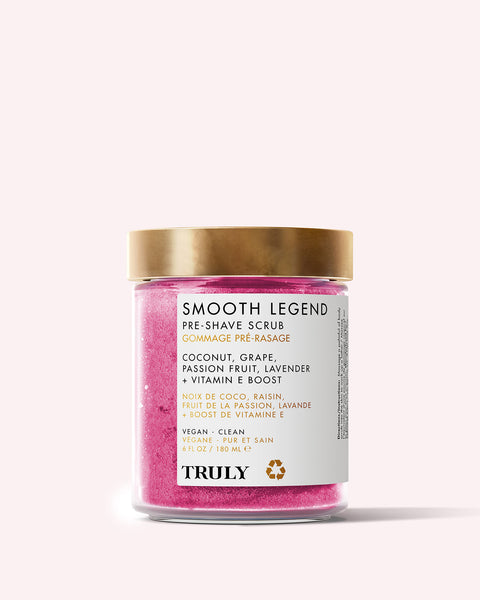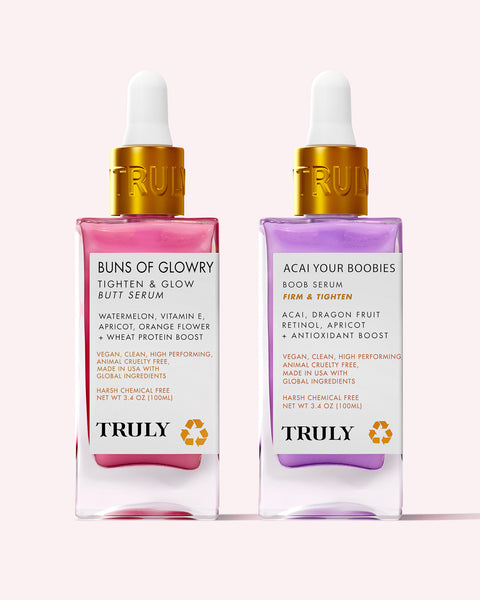Your Guide to Skincare Acids

Just hearing the word “acid” might freak you out, but there’s a lot more goodness to these topical ingredients than scariness. Acids are excellent multitaskers, able to smooth lines, erase dark spots, minimize pores, and glow-ify your complexion all at once.
Still, not all acids work for all skin types and concerns. It’s worth doing your research and understanding them a little more before coating your skin in a concoction of acids.
To help you make sense of it all, we’ve put together a guide so that you can become fluent in the language of skincare acids.
WHAT ARE SKINCARE ACIDS?
Acids are a skincare ingredient often used for exfoliation. There is a myriad of different acids which generally fall within two categories of alpha hydroxy acids (AHAs) and beta hydroxy acids (BHAs), each with its own effect on the skin. You’ll want to make sure you choose the right one to suit your skin.
AHAs are brightening, smoothing, and resurfacing.
“Alpha hydroxy acids are probably the most common acids that are used for the skin,” says dermatologist Laurel Naversen Geraghty. “Those are really nice for exfoliating that outer layer of skin, leaving the skin brighter, evening out skin tone and texture, and they can even stimulate a little collagen production.”
BHAs are antibacterial and best for acne-prone skin.
“Beta hydroxy acids actually bind to sebum — that’s oil,” notes Geraghty. They can penetrate deeply into clogged pores and, in doing so, treat acne.
Then there’s hyaluronic acid, often deemed the moisturizing miracle molecule, which acts as a humectant on the skin.
AHAs
Lactic Acid
Lactic acid in skincare dates back to ancient Egypt when women discovered that the lactic acid found in milk offers moisturizing and softening effects on the skin. Thousands of years later, we’re still using it for that very purpose.
“Lactic acid is one of the mildest acids,” explains plastic surgeon Dr. Melissa Doft. “It’s a great option for sensitive skin. You can also try an acid in a wash formula, which will limit the time that the acid is in contact with your skin.”
Glycolic Acid
Derived from sugar, glycolic acid is the smallest molecule of all the AHAs, meaning it penetrates the deepest into the skin. And that’s what makes it such a popular ingredient in skincare these days.
Glycolic acid regenerates collagen, evens out the skin tone, and thickens the skin. It’s one of the most effective acids available to tackle various skin concerns such as fine lines and wrinkles, pigmentation, and roughness.
However, be careful over-using this acid as it can cause irritation – especially to sensitive skin types. For best results, use it sparingly and in lower concentrations.
For a gentle glycolic acid boost, try Truly’s Mary Jane Glow Serum.
BHAs
Salicylic acid
Salicylic acid is an oil-soluble component that penetrates beneath the skin’s surface to clean out the pores and reduce oiliness. It’s ideal for addressing breakouts.
In fact, it’s commonly found in acne-formulated skincare products. Take a look at your blemish-clearing face cleanser’s ingredients label – salicylic acid is probably in there.
“It helps reduce the cycle of inflammation that causes the redness and pigmentation you can get from acne,” says Dr. Ross Perry, Medical Director of Cosmedics.
Treat your breakouts with Truly’s Hemp Jelly Facial Serum, made with salicylic acid, retinol, and CBD to diminish acne and reduce redness.
And What’s the Deal with Hyaluronic Acid?
It doesn’t come under the AHAs or BHAs categories, but it’s still technically an acid. And it’s a brilliant one!
“Hyaluronic acid is best known for plumping (Juvaderm and Restylane) and hydrating,” explains Dr. Doft. “HA is able to absorb over 1,000 times its body weight in water, leading to fuller, more hydrated skin and thus decreasing fine lines. It’s found in the skin naturally but decreases with age.” You’ll find this ingredient in serums, moisturizers, and eye creams.
Get your daily dose of hyaluronic acid by coating your skin in Truly’s Flower Child Face Cream.
WHAT’S THE BEST WAY TO APPLY AN ACID?
Before applying an acid, you should test the formula on the back of your hand to make sure it’s safe for your skin. If, in 24 to 48 hours you see no reaction, you’re good to go!
Start with a small amount and a low concentration to allow your skin to adjust to the acid. We know you want to see results ASAP, but if you go OTT, the only results you’re going to see are redness and flaking.
Dermatologist Dr. Doris Day warns, “Never start on the forehead.”
She explains, “If any product drips, it will end up in your eyes. Some acids, like salicylic acid and trichloroacetic acid, become stronger if you layer them. Glycolic acid needs to be neutralized to turn off its effects.”
CAN YOU LAYER SKINCARE ACIDS?
You can absolutely layer acids. In fact, dermatologists recommend it – if you know which ones to mix, that is. For instance, using too many drying acids at once can leave your face feeling dry and irritated. Whereas combining certain AHAs and BHAs together can actually maximize the benefits of each for issues like acne, dullness, and sun damage.
If you have sensitive skin, try sticking to one acid that works for you. Too much layering could result in rawness and irritation.
Alternatively, try using an AHA and a BHA on alternate days of the week. This way you’ll reap the benefits of each without risking any negative side effects.
SHOULD YOU ADD ACIDS TO YOUR SKINCARE ROUTINE?
Yes! Every age group (except under 20s) can benefit from incorporating acids into their skincare regimen.
“In your early 20s, I’d recommend introducing a glycolic acid 5% (if you have normal / combination / dry / dehydrated skin) or salicylic acid 0.5% (for acne-prone / oily / combination skin), three-four times weekly unless advised otherwise,” recommends skincare expert Michaella Bolder. “Avoid use on broken or inflamed skin.”
In your 30s? Up your glycolic acid concentration to 10% and incorporate lactic acid for gentle, hydrating action. Use these four times a week.







